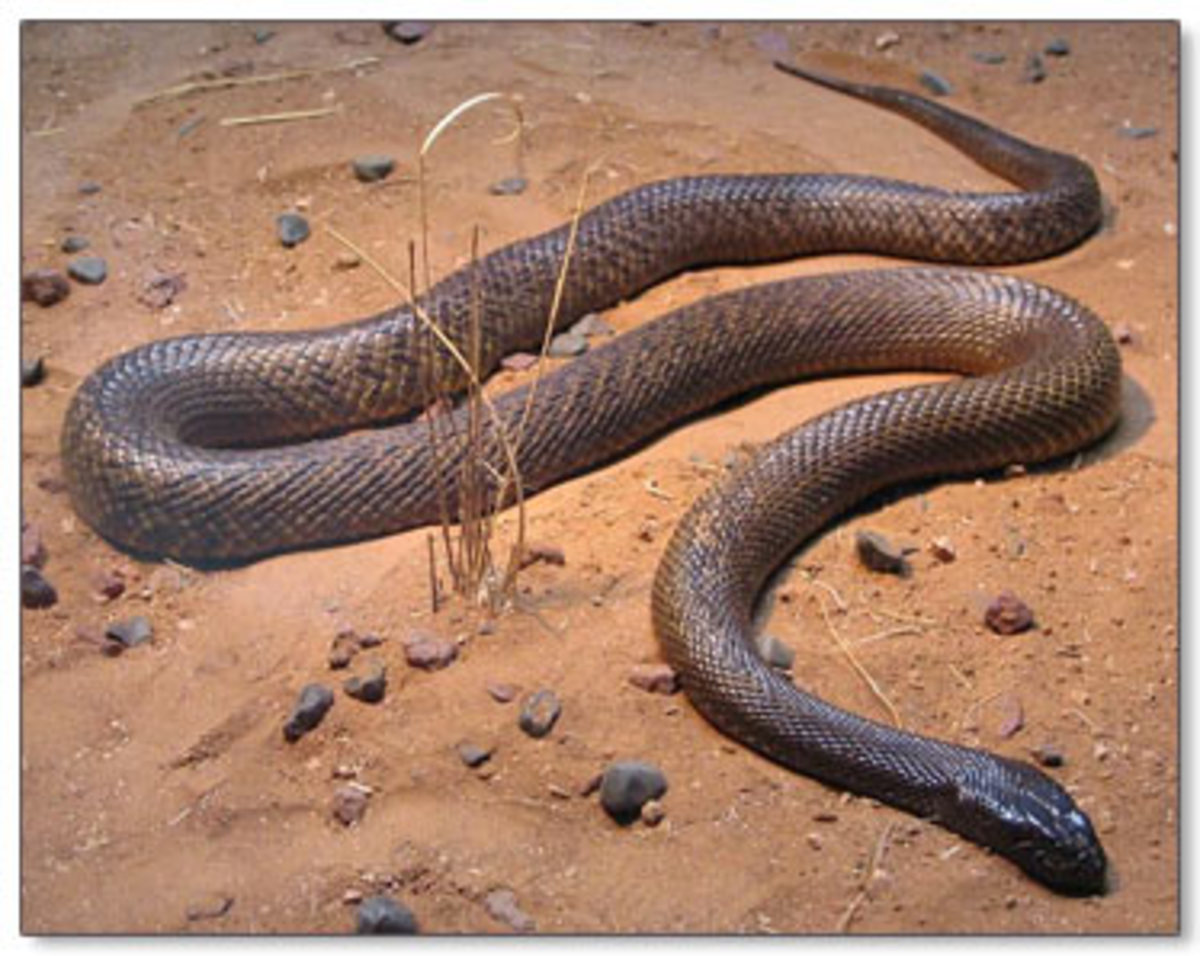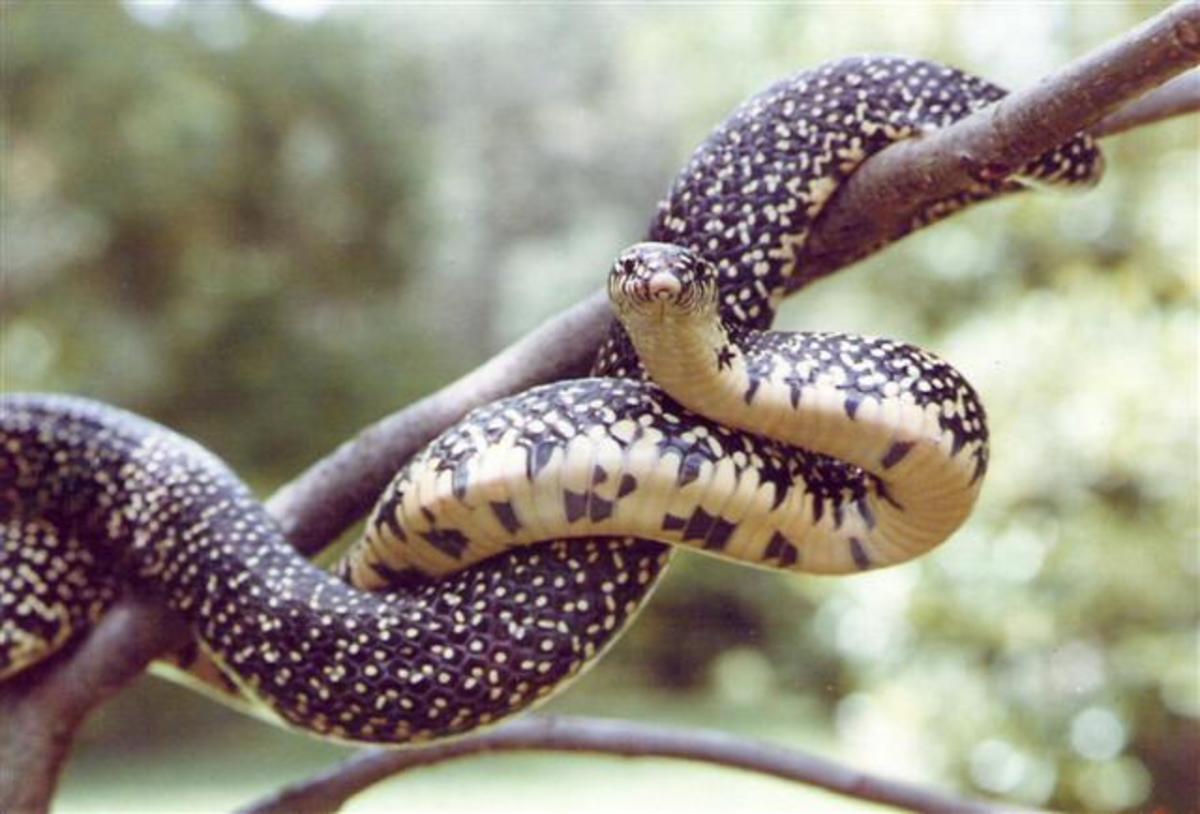The Mamba
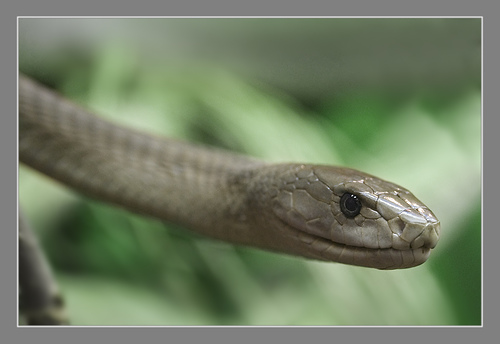
Black Mamba
The black mamba (Dendroaspis polylepis; also called the black-mouthed mamba, southern brown mamba, or swart mamba) is a venomous elapid snake. It is the largest venomous snake in Africa and the second largest venomous snake in the world. Only the King Cobra is larger. Adult black mambas have an average length of 2.5 meters and a maximum length of 4.5 meters. The black mamba receives its name from the black coloration inside of its mouth, rather than their skin color which is a gray to olive tone.
After the king cobra, the black mamba is the longest venomous snake in the world. It is also the fastest-moving snake in the world, reaching up to 23km/h. In spite of its name, the snake tends to be greyish-brown in colour.
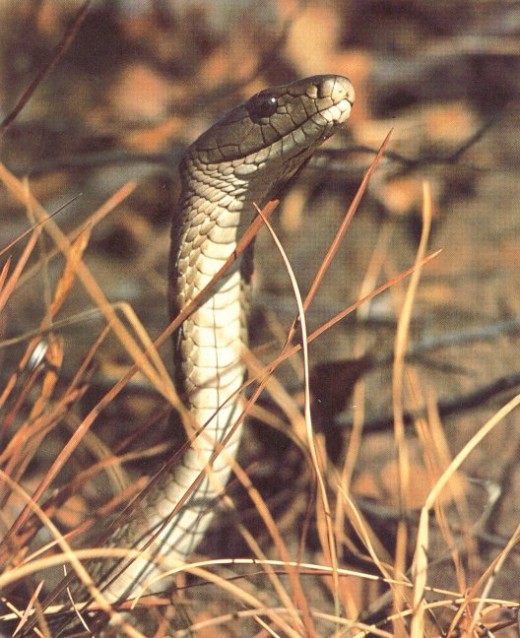
Black Mamba Habits
Black mambas spend their nights in holes in the ground - usually disused burrows - or hiding deep among fallen rocks or timber. These hiding places are also fled to by the snake if it becomes alarmed and it will attack any creature blocking the path to its hole.
Like all reptiles, the black mamba is cold blooded, and relies on external heat to maintain its body temperature. Therefore, it frequently basks in the sun during the day, either on a low branch or a rock, but during the summer, the snake may be forced to take cover in its burrow if it becomes too hot.
Food and hunting: Black mambas travel quickly across rough ground or along low tree branches when hunting. They are able to hold their heads up to 1m above the ground when striking, and can hold them 50cm above the ground even when moving. They have very good eyesight and can strike their prey - rodents, bats, birds and lizards like lightning, leaving their powerful venom to finish off the kill.
The venom is injected through two hollow fangs at the front of its mouth which lie flat until the snake bites something, at which point small, movable mouth bones erect them. The venom causes rapid paralysis. Enzymes in the snakes saliva start to digest the prey before it even reaches the stomach, and most prey is digested within a few hours.
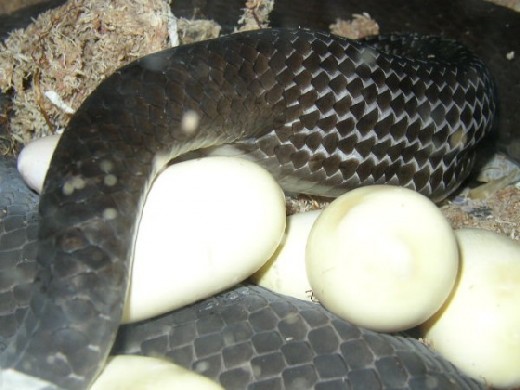
Breeding
This takes place in spring and early summer. Males may travel long distances looking for females. After mating, the snakes return to their own holes. Females lay between 10 and 25 eggs, usually in decaying vegetation. The decomposition of the vegetation gives off heat, which helps to warm the eggs and speed up hatching time. The shells of the eggs allow water and oxygen to reach the developing embryos.
Black mamba hatchlings are around 51cm long, and greyish-green in colour. They are independent immediately and can catch prey the size of a small rat. Within a year, they reach 2m. Young mambas are eaten by mongooses, and even adult mambas are eaten by the secretary bird and larger species of eagle.
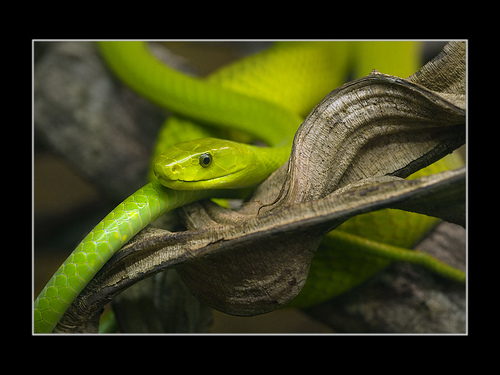
The Green Mamba
The green mamba or common mamba (Dendroaspis angusticeps) is a venomous arboreal snake indigenous to the east coast of southern Africa. Eastern green mambas are the smallest members of the mamba family, averaging 1.8 meters, with known specimens to 3.7 m. The species is found from the coastal forest of the Eastern Cape in South Africa through Mozambique into Zimbabwe and the Malawian coast.
The green mamba is highly arboreal and seldom ventures to the ground unless following prey or basking. Green mambas are diurnal. Unlike the black mamba, it is a shy and nonaggressive snake, and does not often gape and strike if threatened but usually makes a swift and elegant escape. Continued provocation will cause the snake to strike, and bites, although serious, are uncommon.
Behaviour
The venom thoug is extremly strong and could kill a man in a few hours if not treated. It is highly neurotoxic but this mamba does inject only a smaller amount compared to the black mamba.
The green mamba is highly arboreal and seldom ventures to the ground unless following prey or basking. Green mambas are diurnal. Unlike the black mamba, it is a shy and nonaggressive snake, and does not often gape and strike if threatened but usually makes a swift and elegant escape. Continued provocation will cause the snake to strike, and bites, although serious, are uncommon.
Green mambas make their homes near trees, often in evergreen forest, coastal scrub, or moist savannah. Bamboo thickets and mango plantations are also known to be mamba habitat.
Their diet consists primarily of adult and juvenile birds, birds' eggs, and small mammals. Young mambas occasionally eat other reptiles, such as chameleons.
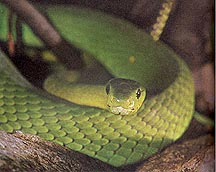
Breeding
The green mamba is oviparous, laying 6-17 eggs in summer. The eggs are usually laid in a hollow tree among decaying vegetation. Hatchlings measure between 35 and 45 cm (13 to 18 inches) and are venomous from birth. Males of this species are known to engage in combat for mating rights, similar to the combat practiced by male king cobras. The combat involves wrestling matches, with snakes twisting and pushing each other to the ground, which may last several hours. Combat does usually not include biting.

